Homes inspired by nature
March 27, 2012
Provided by:

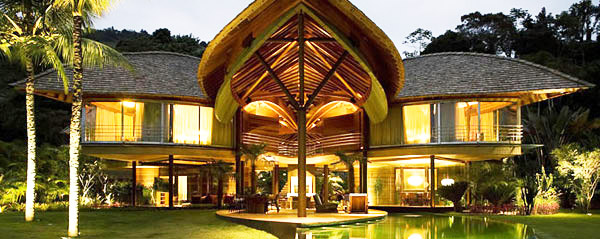 |
| Leaf-like ceilings cover Casa Folha ("Leaf House") in Brazil. Photo: Mareines + Patalano |
While some homeowners see their abodes as shelter from the elements, others want to embrace nature and invite it inside. Some homes are designed with prominent features that bring the outdoors in.
This is not simply a matter of throwing together a few house plants, or including lots of windows and sliding glass doors or planning for a stone accent wall or some exposed wooden beams. Some homeowners, designers and architects take their love of nature further by bringing in, and building in, parts of the outside.

Garden
Location: Vancouver, British Columbia
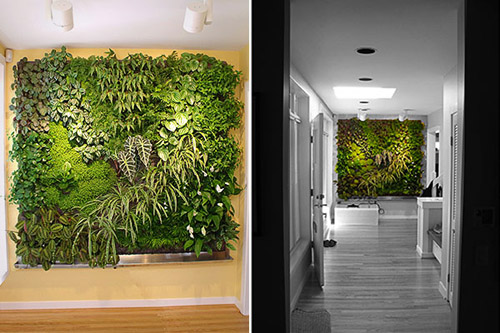 |
| A 55-gallon reservoir helps feed this vertical garden. Photo: copyright Green Over Grey |
So far, living vertical gardens, or green walls, are seen more often in company headquarters and other businesses than in private residences. That’s beginning to change, and one of the companies planning and installing these features in both public and private spaces is the Vancouver-based design firm Green over Gray.
Cave
Location: Malibu, Calif.
Listing price: $3.5 million
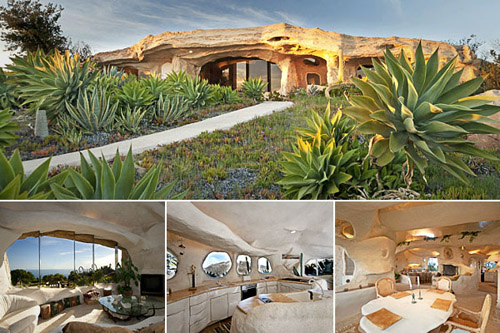 |
| The cave-like dwelling looks as timeless as its owner, Dick Clark. Photo: Trulia.com |
This house looks very B.C. and it belongs to D.C. – Dick Clark. The television host famous for looking like a teenager since the dawn of time has listed his Malibu cave-like dwelling at $3.5 million.
The one-bedroom, two-bath house occupies a respectable hilltop parcel of 22.89 acres. It looks like it was carved out of this bluff, but not all caves have such sweeping views — in this case it includes mountains, the Valley, the city lights, and the ocean.
Branches
Location: Costa Smeralda, Sardinia, Italy
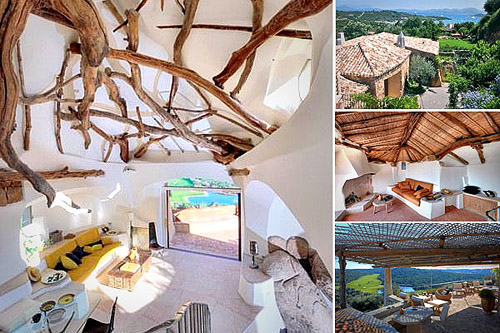 |
| Ceiling beams resemble roots in this Italian home. Photo: Luxury Portfolio International |
Villa Due Mari (or the “villa of two seas”) was designed by architect and local Sardinian Savin Couelle, whom Architectural Digest noted often works with organic shapes and rough-hewn materials.
Ville Due Mari is no different, with its sculptural curvilinear walls and ceiling beams that look like giant roots. The home, which is for sale (“price upon request”), features antique beams, seven en-suite bedrooms, two guest baths and three kitchens. Adding to the appeal are views of the Pervero golf course, and beyond that, the sea surrounding the island.
This installation in a private home in the oceanside community of Point Gray, titled Super Natur’Hall, measures approximately 6’ x 6’ and contains 22 species (more than 250 plants). It relies on a 55-gallon reservoir with automated irrigation system, organic fertilizer, two 70-watt light fixtures as well as 12 light hours to ensure it thrives year-round and doesn’t become a brown wall.
Tree
Location: Squam Lake, N.H.
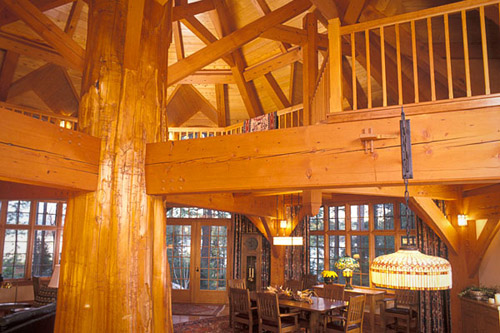 |
| A former cedar tree helps support this New Hampshire home. Photo: Bensonwood Homes |
You’ve seen log cabins, and log-style beams, but this New Hampshire home looks like it was built around a tree. That former tree is a western red cedar some 6 feet in diameter, and it serves an important role in the home by supporting the octagonal great room.
This 3,500-square-foot home was built by Bensonwood Homes of Walpole, N.H., and is located on Squam Lake, where the 1981 movie "On Golden Pond" was filmed.
Leaves
Location: Angra dos Reis, Brazil
 |
| The home's leaf ceilings shelter the indoor and outdoor spaces between them. Photo: Mareines + Patalano |
Casa Folha means “Leaf House” in Portuguese, and it’s easy to see why. This home doesn’t just bring leaves inside, it appears to be made of six giant leaves. According to the architects, Mareines and Patalano, the home’s design was also inspired by Brazil’s indigenous architecture, with the inside and outside almost fused.
The roof shelters the home’s interiors and outdoor spaces between them. The ceilings were designed to be quite high to allow the southeast trade wind to pass through, which naturally cools the house. The distinctive roof also collects rainwater for gardening and toilets, and other materials are locally sources and reused.
No comments:
Post a Comment